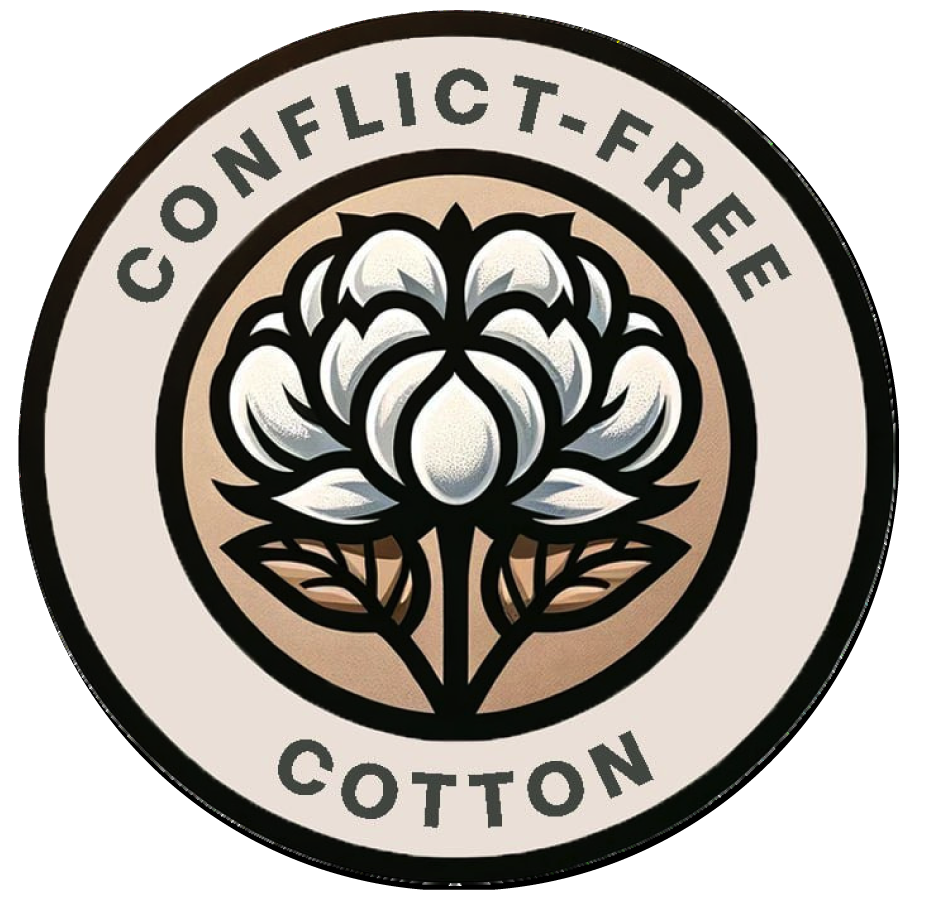Conflict-Free Cotton: Pioneering Traceability in Ethically Sourced Fashion
The fashion industry, often criticized for its environmental impact and labor practices, is undergoing a transformation driven by a growing demand for transparency and ethical standards. This demand has led to the rise of conflict-free cotton—a movement ensuring that cotton production does not involve human rights abuses such as child labor, forced labor, or poor working conditions.
The Global Ethical Dilemmas of Cotton Farming
Approximately 99% of the world's cotton farmers are based in developing countries, where agriculture not only forms a critical part of the economy but also serves as a lifeline for millions of households. The predominance of cotton cultivation in these regions highlights the importance of sustainable and ethical production practices, especially considering the challenges related to labor and environmental management.
Sadly, in 19 countries around the world, the serene rural landscape is marred by the exploitation of children, where the grim realities of child labor in cotton fields cloud the innocence of childhood.
This blog explores the technologies and systems enabling the traceability of conflict-free cotton from the fields to stores, ensuring consumers can make informed choices about the cotton-based products they use, from apparel to home textiles.
The Challenge of Traceability in Cotton Production
Cotton, one of the world's most widely used natural fibers, is cultivated extensively across the globe, with a significant concentration in developing countries where regulatory oversight can be less stringent. The complexity of the cotton supply chain, which involves numerous stages from cultivation to final garment production, traditionally makes traceability a formidable challenge. However, the advent of digital technologies is changing the landscape.
Understanding The Meaning of Conflict-Free Cotton
Conflict-Free Cotton is defined by the absence of forced labor, child labor, and any form of human rights abuse throughout its production process. This cotton is harvested under conditions that respect the dignity and rights of workers, ensuring their safety and fair compensation. The movement towards conflict-free cotton highlights the necessity for transparency and accountability, especially given that a significant portion of the world's cotton is cultivated in developing countries, where violations are most prevalent.
The Role of Digital Track and Trace (DATT) Technology
At the forefront of the traceability movement is the Digital Track and Trace (DATT) solution. This technology revolutionizes how cotton's journey is tracked, starting right from the fields:
- Digital Birth Certificates: Each batch of cotton harvested is assigned a digital birth certificate, detailing key information such as the harvest location and time. This certificate plays a crucial role in verifying the origins of the cotton and ensuring it meets strict ethical standards.
- Mechanized Harvesting: The DATT system incorporates mechanized harvesting techniques that minimize human labor, thereby reducing the risk of labor violations. This mechanization is crucial in regions where manual cotton picking is associated with high risks of child and forced labor.
- Geospatial Tracking: By providing a geospatial footprint for each batch of harvested cotton, DATT technology ensures that all stakeholders in the supply chain can verify the cotton's origin. This transparency is vital for brands and consumers who are committed to ethical sourcing.
Enhancing Traceability from Field to Fashion
The traceability of conflict-free cotton does not just end at the farm. It extends through the entire supply chain, from ginning factories to textile mills, and finally to the retail shelves. This comprehensive tracking is achieved through several key processes:
- Digital Passport System: After the cotton is ginned, each batch receives a digital passport that records every step of its journey. This passport is continuously updated as the cotton moves through spinning mills and finishing factories, ensuring that each phase of the manufacturing process adheres to ethical standards.
- Audit Enablement: The digital data collected allows for independent audits of the supply chain. Auditors can access detailed records of the cotton's journey, verifying that it remains free from human rights abuses at every stage.
Impact on the Industry and Consumer Choice
The implementation of these technologies has significant implications for both the industry and consumers:
- For Brands: Enhanced traceability helps companies ensure compliance with increasingly stringent regulations on labor practices and supply chain transparency. It also helps in building brand trust and loyalty among consumers who are increasingly conscious of ethical considerations.
- For Consumers: With accessible traceability data, consumers can make informed choices, opting for products that are not only high in quality but also align with their values concerning human rights and environmental sustainability. By opting for conflict-free cotton, consumers play a critical role in promoting ethical practices in the fashion industry. This choice supports a supply chain that values human dignity and environmental sustainability. It also pressures brands to uphold high ethical standards, knowing consumers demand transparency and integrity in their products.
Creating a Movement in Conflict-Free Cotton
The movement towards traceable, conflict-free cotton is reshaping the fashion industry by introducing higher standards of transparency and accountability. As this trend gains momentum, it encourages a broader shift towards more ethical and sustainable practices across all stages of textile production. By supporting conflict-free cotton, consumers contribute to a global effort to improve the lives of millions of workers and ensure the long-term sustainability of the cotton industry.
In embracing these technologies and supporting ethical sourcing, we can all play a part in weaving a better future for the fashion industry and its workers.



